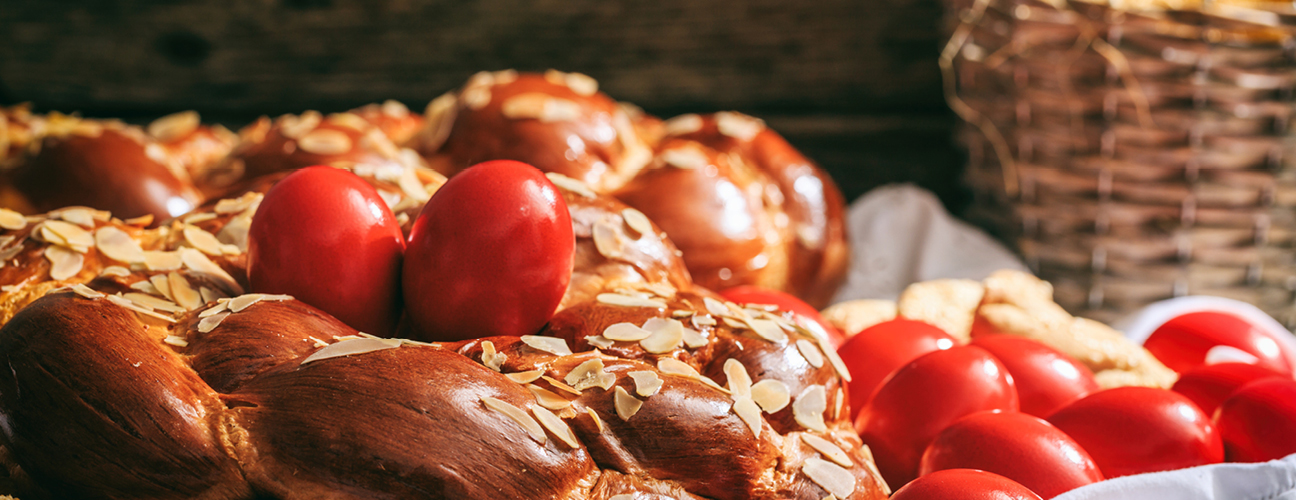Get your bake on!

In the lead up to Easter, get baking! There’s a rich tradition of delicious baked goods produced in the weeks before Easter. We take you on a tour of Easter delicacies around the world, which might inspire you to try your hand at some wholesome baking – perfect for Easter morning or to give as a gift on Easter Sunday.
Easter baking is a tradition borne out of practicality. During Lent, those following religious fasting rules in times gone by, traditionally abstained from meat and animal products, including eggs. But chickens didn’t have 40 days off during Lent, so eggs were abundant and therefore baked into delicious treats to be eaten on Easter Sunday. In this way, many Christian cultures around the world created their own traditional baked goods designed to use up this surplus.
Russians bake pashka, an Easter curd cheesecake using the first of the spring milk. They also bake kulich, a tall bread with a bulging top decorated with the words “Christ is risen”.
In Greece, lambropsomo and tsoureki are Greek Easter breads rich in eggs and butter and usually plaited, with a boiled red-dyed egg baked into the plait.
In Germany they bake Osterzopf bread, and breads in the shape of hares (a symbol of fertility and similar to the original Easter bunny of the Saxon pagan festival Eostre, celebrating the goddess of light).
Italians give their loved ones an Easter panettone called La Colomba, which is in the shape of a dove, the dove of Christ symbolising salvation.
Originally an English tradition, hot-cross buns are made with a rich yeast dough containing milk, sugar, eggs, dried fruit and spices. This tradition also has roots in pre-Christianity – Saxons ate buns marked with a cross in honour of their goddess Eostre. In Christian times, the cross cut in the bun was said to be there to let the devil fly out.
Try your hand at some Easter baking from Hill Street’s recipe collection:
Fruity Hot Cross Buns
Tsoureki – Greek Easter Bread
Hot Cross Doughnuts

